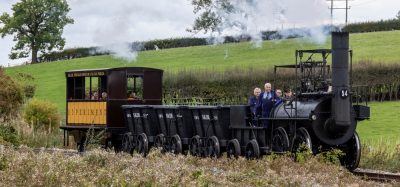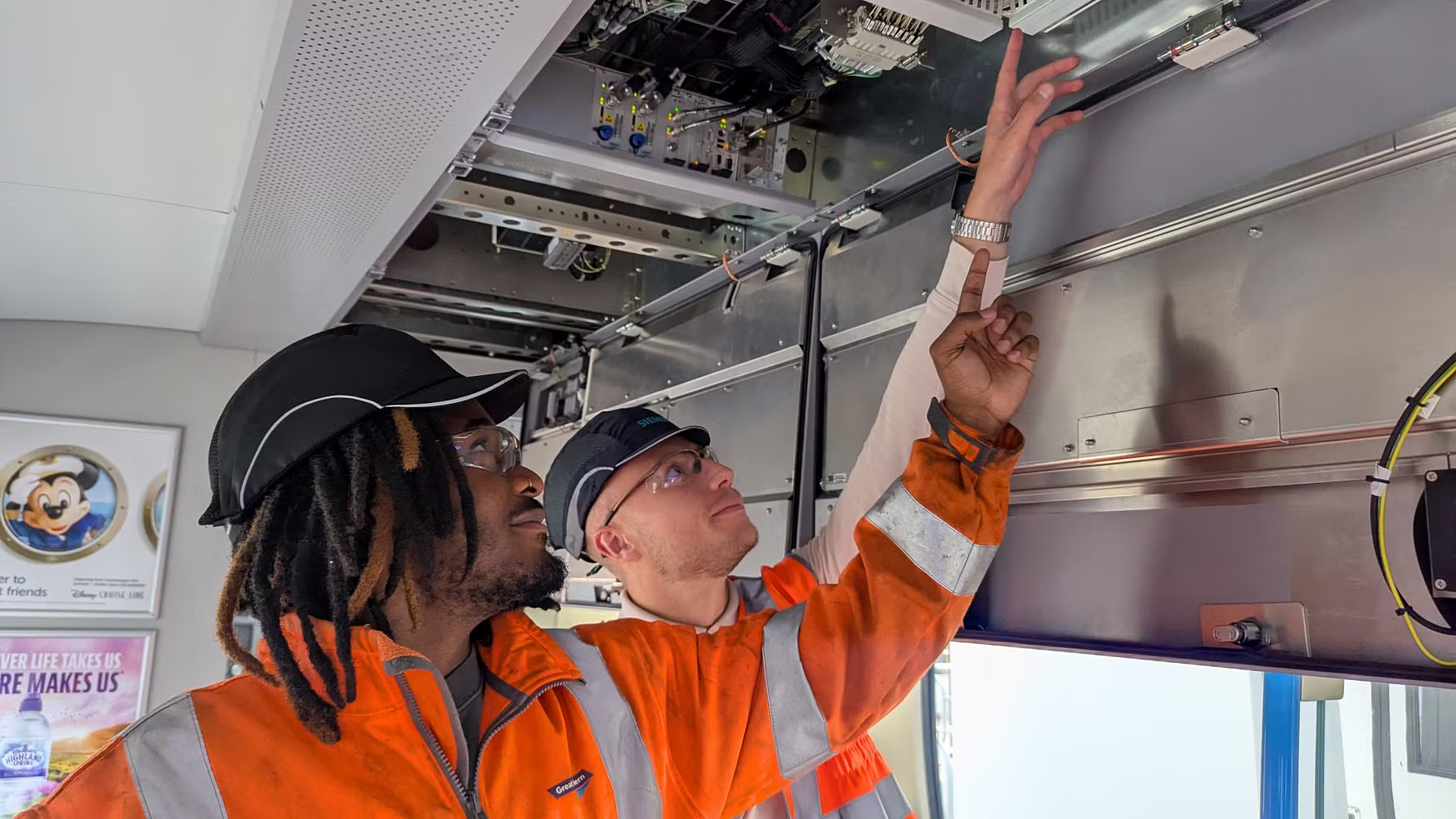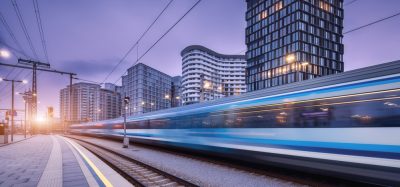Fresh challenges for German railways in the new decade
Posted: 5 April 2010 | | 1 comment
The economic recession has had a big impact on Germany’s railways – but restructuring of the industry is continuing, albeit at a slower pace. The 2008 credit crunch had a severe effect on manufacturing across Europe, with automobile assembly and construction hard hit. This had knock-on effects on the railways: steel and coal traffic in particular were down, taking rail freight carryings in Germany down by well over 10% last year.
The economic recession has had a big impact on Germany’s railways – but restructuring of the industry is continuing, albeit at a slower pace. The 2008 credit crunch had a severe effect on manufacturing across Europe, with automobile assembly and construction hard hit. This had knock-on effects on the railways: steel and coal traffic in particular were down, taking rail freight carryings in Germany down by well over 10% last year.
The economic recession has had a big impact on Germany’s railways – but restructuring of the industry is continuing, albeit at a slower pace. The 2008 credit crunch had a severe effect on manufacturing across Europe, with automobile assembly and construction hard hit. This had knock-on effects on the railways: steel and coal traffic in particular were down, taking rail freight carryings in Germany down by well over 10% last year. Passenger traffic was not so badly affected, but the effect on the railway’s finances of the recession prompted the federal government to put off plans for a partial flotation of the state railway, Deutsche Bahn (DB), on the German stock market.
Nevertheless, the private sector is making ever larger inroads into the operation of Germany’s railways. Tendering of local services by the German Lände (regions) is now a well-established practice, and although DB has won the majority of the tenders, private operators have made steady advances year-on-year. Over 12% of the local transport market is now in private hands, with companies such as Veolia of France and Arriva of Britain prominent in the market. Germany is proving an enticing target for private sector inter-city operators as well, as the multiplicity of routes between main centres gives capacity in the system for the accommodation of competitive services.
However, other barriers to entry have kept private sector participation low so far, at around 1% of the inter-city rail market. The chief participant up until now has been Veolia, which has operated services in the east of the country, from Berlin to Leipzig and Dresden, for some years. But others are now looking to enter this sector, with a local entrepreneur, Derek Ladewig, teaming up with British and American operators to give DB a run for its money in the inter-city sector. The consortium they have set up, called Hamburg-Köln Express (HKX), comprises Locomore Rail company (based in Berlin), Railroad Development Corporation (RDC, based in Pittsburgh, USA) and the British investor Michael Schabas (who was a principal in the Anglia Railways operation in the UK bought by First Group). The partners have announced plans to provide passenger transport services between Hamburg and Köln from August 2010, with the planned timetable including three daily return journeys.
The rolling stock will be procured from ÖBB (Austrian Federal Railways). Locomore founder Derek Ladewig plans to establish another company that will operate with budget fares on the Berlin-Frankfurt and Stuttgart-Hamburg routes, starting in 2011. Meanwhile, the opening up of international routes to competition under European Union legislation from the beginning of this year is prompting state operator DB to look to expand outside the country’s borders. For a while it seemed that the two great state railways of Europe, DB of Germany and SNCF of France, would compete on each other’s turf, but that prospect seems less likely now. A truce between the two has been established, with one consequence being that DB may get to take a stake in the Eurostar company operating international trains through the Channel Tunnel to London. On the freight side, private sector participation in the market is now a well-established fact, with private companies taking a quarter of the total traffic. In September 2009, Veolia – a long-standing participant in the market – sold its cargo operation outside France to the French state operator SNCF (Veolia Cargo’s French operation went to Eurotunnel to assuage the competition authorities). Thus one of the main competitors in the rail freight sector in Germany is now the French state operator, leading some observers to fear a cosy duopoly that will stifle competition.
Infrastructure investment
The economic recession has resulted in pressure on public finances across Europe, but railway investment is long term by nature and a useful counter-cyclical tool which policy makers are often loath to cut too hard. Certainly in Germany some ambitious projects are pressing ahead, with extensions to the urban networks in cities such as Berlin and Hamburg and new high-speed lines as well. The VDE-8 project is due to be the next addition to Germany’s already extensive high-speed network. VDE-8 extends north to south in the east of Germany, from Berlin to Nürnberg. The Berlin to Leipzig section has already been improved as a 200km/h Ausbaustrecke (ABS – upgraded historic line), with extension southwards now underway. In 2015, the Halle-Erfurt section is due for completion as a 300km/h Neubaustrecke (NBS – new high-speed line). Of the 116km on this stretch, most will be new construction, with just 8km of ABS around Halle. The demanding topography requires some expensive structures: there will be three tunnels, 63 bridges and six viaducts on this section. Next will come the 107km from Erfurt to Ebensfeld, which again will be a 300km/h NBS through even more difficult terrain: there will be 22 tunnels (totalling 41km in length) and 29 viaducts (12km in total). This stretch is due to be in service by the end of 2017. The final 82km from Ebensfeld to Nürnberg will be a 230km/h four-track ABS. Part of the project will be to upgrade the Nürnberg S-Bahn system to provide more capacity on the approach to the city, with a new 6km tunnel planned below the suburb of Fürth. An interesting aspect of the VDE-8 project is that it is intended to be signalled using the European Train Control System (ETCS), the largest application of ETCS in Germany to date. This will be a mixed traffic railway, with some freight interspersed between the passenger trains: for safety reasons it is important that air forces are controlled when freight trains cross with passenger trains in the many tunnels on the route, so one of the roles of the ETCS will be to ensure safe crossing points between the two.
Slow application of ETCS
While the Berlin-Nürnberg route will be an ETCS pilot for DB, the company has been slow to adopt the European standard signalling system elsewhere on its network. The main reason for this is cost: it is estimated that ETCS costs three times more than the German automatic train protection system LZB, and a massive ten times more than the conventional signalling system PZB. Consequently, migration to the new system has been proceeding at a snail’s pace. Just 83 vehicles are fitted for ETCS – about 1% of DB’s approximate 10,000 vehicle rolling stock fleet. And while there are plans to go live in 2015 with ETCS Level 2 with no lineside signals and no back-up system on the VDE-8 high-speed line, there remain about 32,000km of tracks in the rest of the country to be tackled. The stark fact is that there is no funding in place for migration to ETCS in Germany. The vehicles that have been equipped with ETCS are mainly those used on cross-border routes, where adapting the vehicles to ETCS has been paid for by neighbouring administrations: they include 26 Class 189 locomotives working freight trains on the Betuwe line in the Netherlands and ten Class 185s used on cross-border routes into Switzerland. To equip trains and tracks on a large scale across Germany would take four billion Euros by 2020, and apart from the VDE-8 project (where ETCS is an integral part of the construction), no funds have been earmarked for this. A couple of routes are expected to go live with ETCS in 2012. An Ansaldo system is being installed in parallel with the existing PZB system on the 135km of the cross-border route to Paris between Ludwigshafen and Saarbrücken. On a similar timescale, a Thales-supplied ETCS Level 2 system is expected to come in on the 166km Nürnberg-München 300km/h line (currently running with LZB/PZB).
Rolling stock acquisition
On the rolling stock side of the industry, the most important development recently has been that Siemens has been selected by Deutsche Bahn as preferred bidder for the ICx project to replace loco hauled IC/EC trains by the middle of the decade. As a second stage of the ICx project, it is intended that a faster version of the train will replace Germany’s first generation high-speed train fleet, the 280km/h ICE 1 fleet, from 2020 onwards. Ultimately, ICx will replace the ICE 2 fleet as well. If all this comes to fruition it is likely the eventual deal will be worth more than five billion Euros – unsurprisingly, the contract has been keenly fought, with both Bombardier and Alstom vying with Siemens to win it. In the regional sector, tendering of local transport services often prompts rolling stock investment. A recent case in point is the Berlin/Brandenburg area, where separate contracts were let last year to two bidders – DB Regio and Ostdeutsche Eisenbahn GmbH (ODEG, a joint venture between Hamburger Hochbahn subsidiary BeNEX and Arriva of the UK). The two winning bidders have now placed orders for rolling stock for the modernisation of their parts of the system. DB Regio has ordered 48 TALENT 2 EMUs (26 three-coach and 22 five-coach trains) from Bombardier for its Netz Stadbahn contracts in Berlin/Brandenburg. This has brought the total number of TALENT 2 trains on order under a framework contract agreed in 2007 (for 328 trains in total) to 176. Meanwhile, ODEG has ordered 16 doubledeck EMUs from Stadler. These will be to a new design derived from the existing FLIRT single deck EMU. ODEG has also ordered seven DMUs from Stadler (six two-car Class 646 GTW 2/6 type and one Class 650 Regio-Shuttle single car) for delivery by December 2011 for use on non-electrified routes. Other such orders include 34 double-deck coaches ordered from Bombardier by regional operator LNVG, while the Niedersachsen transport authority ordered ten 2-car LINT DMUs from Alstom. DB Regio has a framework agreement with Alstom for up to 180 LINT units, and in November 2009 it started to draw on this with 16 two-car sets for use in Schleswig-Holstein from the end of 2011.
OUT NOW: The Definitive Guide to Rail’s Digital Future
The rail industry is undergoing a digital revolution, and you need to be ready. We have released our latest market report, “Track Insight: Digitalisation.”
This is not just another report; it’s your comprehensive guide to understanding and leveraging the profound technological shifts reshaping our industry. We move beyond the buzzwords to show you the tangible realities of AI, IoT, and advanced data analytics in rail.
Discover how to:
- Optimise operations and maintenance with real-time insights.
- Enhance passenger services through seamless, high-speed connectivity.
- Leverage technologies like LEO satellites to improve safety and efficiency.
Featuring expert analysis from leaders at Nomad Digital, Lucchini RS, Bentley Systems and more, this is a must-read for any rail professional.







